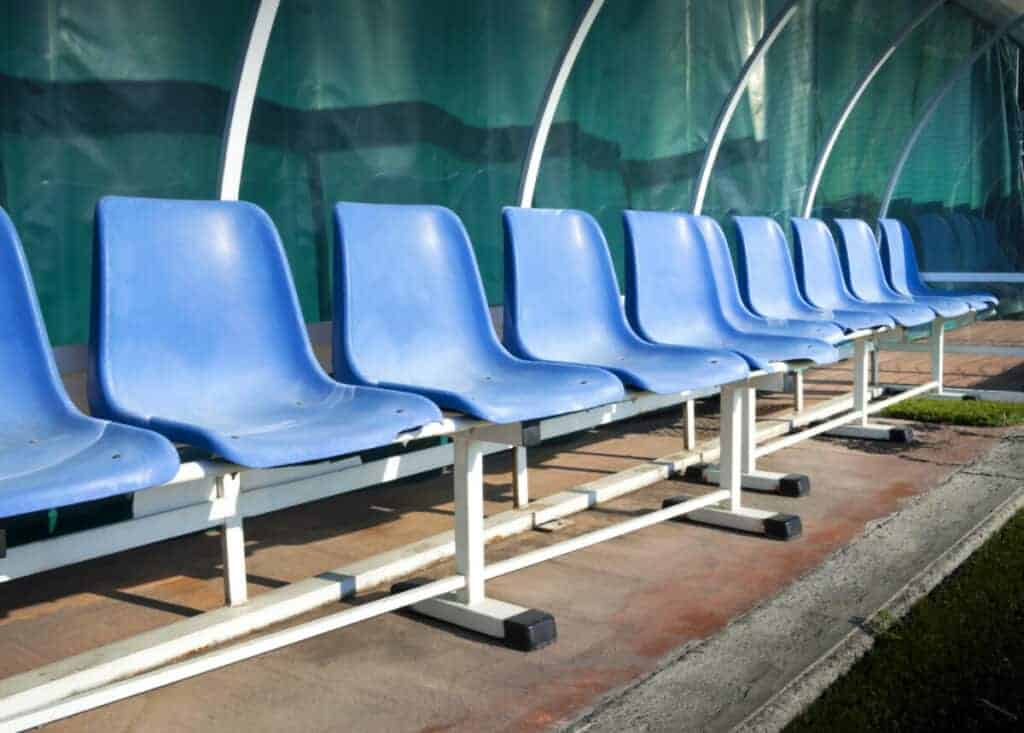Why does soccer limit subs
One thing that is unique about soccer, aside from a couple of other sports, is that they limit the number of substitutions that can happen in a game. After seeing this rule play out during a game, many people wonder why soccer games don’t allow an unlimited number of subs.

Soccer limits the number of substitutions in a game to help prevent too many interruptions, and to keep one team from having an unfair advantage over the other. Each soccer team is allowed a total of 5 substitutions in a single game, but in youth soccer and friendly matches, there is no limit.
But there’s more to this substitution rule than just that, so continue reading to find out more about the reason behind the substitution limit in soccer, as well as everything else you should know about soccer substitutions.
Number of substitutions in soccer games

Each soccer team is allowed up to 5 substitutions per competitive soccer game. This means that 5 people can sit on the sidelines during the game and be called in one at a time to play the field, based on the position that needs to be filled, and the player will be selected as the best fit for the position based on their strengths and qualities.
In the past, there were fewer substitutions allowed in a single game, but as the rules have expanded and been updated over time, there has been an increasing number of reasons that a substitute would need to be called onto the field to replace someone who committed some sort of foul.
This substitution limit applies only to professional soccer teams, as well as community, high school, and college teams. Youth soccer does not have a limit to how many times a player can be substituted by another from the sidelines, nor do most international friendly competitions in which the players are not playing for a win but rather for recreational purposes or for a fundraiser.
When substitutions are used but not counted
There are some instances in which a substitute can be used to replace another player, but is not counted against the limit of 5 substitutes per team per game. The first time a substitute is not counted is when the substitution occurs during the 15-minute half-time break that occurs halfway through the 90-minute game.
The reason these extra substitutions are allowed during this time is part of the reason for the limit in the first place. Extra substitutions can also be used after the 90-minute time is up, during what is called “extra time.”
Lastly, a substitution can be used during a game to replace a player who has suffered a concussion that won’t be counted toward the limit of 5 substitutions.
Reasons for the limit

There are a few extra reasons we haven’t yet discussed that explain why the number of substitutions per game is limited, but the main one is that substitutions interrupt the flow of the game, so match officials want to limit the maximum amount of times necessary interruptions can happen.
Interruptions not only cause the extra time to be added at the end of the game, but it creates push back against players because they have to pause what they’re doing and it often takes a few moments to remember what they were doing before the pause and get back into the flow of the game.
The more times an interruption occurs during a game, the more the players will get confused and have to rebuild the momentum they had just before the pause once the game resumes. If substitutions were not limited, it would not only be very fun to play but to watch as well.
As soon as a player is about to make a pass or a shot at the goal, the game will pause to let yet another player enter the field because players will feel more inclined to commit fouls or misdemeanors during the game because there is no substitution limit to count against them.
Another reason that substitutions are limited is that it encourages the team to use their tactical preparation to their advantage. Using tactical options and techniques is encouraged because the players will want to avoid situations in which a player needs to be replaced because of a foul or injury, so instead, they’ll want to use the techniques to adapt to different instances they’ve yet to experience on the field, which they have been trained to know how to adapt by their soccer coaches.
If every player was removed from the game and replaced as soon as they get tired, then players won’t be trained to endure the tiring effects of playing the game, and it will prevent the natural effect of tired players at the end of the game.
As players naturally get a bit weaker toward the end of the game, the game tends to speed up as players are more easily able to make scores because of the decreasing stamina and endurance coming from the other team.
When are substitutions used?

Substitutions are used only when it’s absolutely necessary, to prevent teams from going through the minimum number of substitutions too quickly. If a team runs out of substitutes and needs an extra player, then the game would have to continue with the number of players remaining on the field. Players that were injured during the game and treated to the point they can return to the field, then this will be a chance when they can resume playing the game.
Substitutes are only added to the game when called for by the referee. No substitute is allowed to enter the field without permission from the referee. The player that is being substituted must also leave the field before the substitute can enter the field. Players can be sent off if they are injured and need treatment or medical attention, as well as if they have committed a foul or misdemeanor on the field that constitutes a red card.
Any player who has been given a red card and removed from the field may not enter the field, but players that leave the game after an injury may re-enter the game once they’ve received treatment and the game has run out of substitutes. A player may also be removed from the game simply for not performing well, for example if they are sick or experiencing too much physical or mental tiredness to be able to perform well. Players are removed and substituted by the opinion of the referee.
Substitutions during extra time
Once the time is up for each half of the game (at the 45-minute and 90-minute mark) and the game goes into extra time (which is added because of breaks in the game, such as substitutions, an injury, penalties, a lost ball, etc.), substitutes can be added into the game for to be played for the span of that extra time. These substitutes do not count toward the substitute limit.
